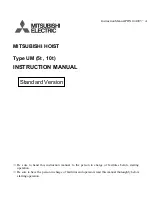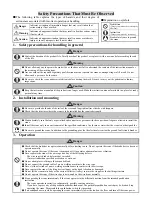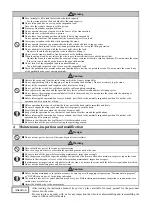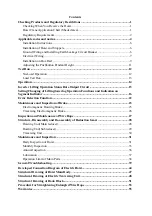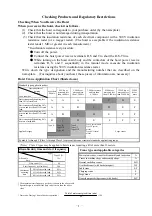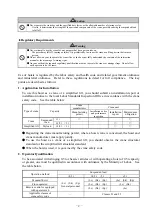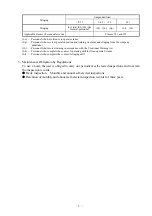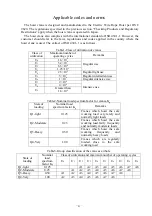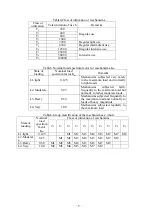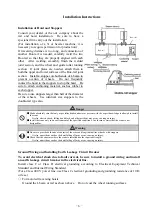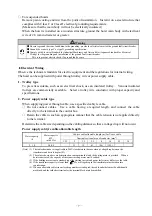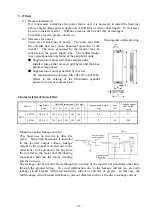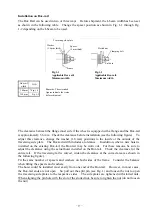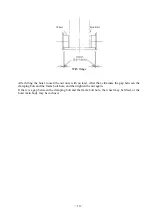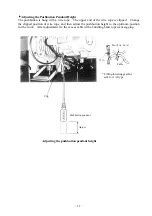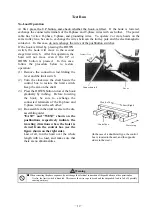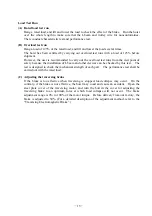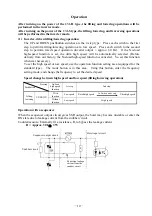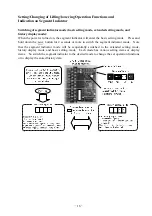
-
1
-
Checking Products and Regulatory Restrictions
Checking When You Receive the Hoist
When you receive the hoist, check it as follows.
(1) Check that the hoist corresponds to your purchase order (by the nameplate).
(2) Check that the hoist is not damaged during transportation.
(3) Check that the insulation resistance of each electrical component with a 500 V insulation
resistance tester (or a megger tester). (The hoist is acceptable if the insulation resistance
tester reads 1 M
Ω
or greater in each measurement.)
* Insulation resistance test procedure
●
Turn off the power.
●
Connect the hoist power receive terminals R, S and T to short the R-S-T line.
●
While turning on the hoist main body and the contactors of the hoist power receive
terminals R, S, and T sequentially in the manual mode, measure the insulation
resistance using the 500 V insulation resistance tester.
Write down the type designation and the manufacturing number that are described on the
nameplate. (For inquiries about your hoist, these pieces of information are necessary.)
Hoist Crane Application Chart (Shaded area)
Standard type application chart
Operating time of
hoisting
devices
Load condition
Less than
800 hrs
800 hrs or
more and less
than 1,600 hrs
1,600 hrs or
more and less
than 3,200 hrs
3,200 hrs or more
and less than
6,300 hrs
6,300 hrs or
more and less
than 12,500 hrs
12,500 hrs or
more and less
than 25,000 hrs
25,000
hrs or
more
Hoist crane usually handling less
than 50% of rated load
A A
A
B
C
D E
Hoist crane usually handling 50%
or more and less than 63% of rated
load.
A A
B
C
D E
F
Hoist crane usually handling 63%
or more and less than 80% of rated
load.
A B
C
D E
F
F
Hoist crane usually handling 80%
or more of rated load.
B
C
D E F
F
F
Applicable types
Type E
Type R
TypeUR
Type M
Type S
Type U2
Type HU2
Type S special model
Type U2 special
model
Type HU2 special
model
Large cranes
Symbols A through F (Class A through Class F) represent the crane structural standards application groups.
(Note) Class C types may be applied to hoist cranes requiring a lift of more than 12 meters.
Allowable duty time and start frequency
* The maximum start frequency per hour is shown in the above table.
* Special design is needed if the duty ratio is more than the above
value.
* Duty ratio: During 1 hour of hardest operation =
Total of motor energized time (min)
60
×
100
Type
Allowable
duty
Type M (5t ,
10t)
Duty ratio (%)
40
Start frequency (cycles/hour)
240
Coutinuous
operating
time
50% of the rated load
8Hr
63% of the rated load
4Hr
80% of the rated load
2Hr
Crane type and applicable categories
Power plant cranes, cranes for disassembly and inspection
A
Cranes in machine shops and assembly shops
A
General workshop cranes
B-D
Overhead cranes (with bucket, magnet)
D-F
Ladle crane
E-F
Charging crane
F
Forge crane
F
General purpose bridge cranes (with hooks)
B-C
Summary of Contents for UM 10t
Page 51: ... 47 Structural Drawing of Hoist Main Body 5t 10t PA00531 ...
Page 52: ... 48 Structural Drawing of Electric Traversing Unit Monorail Type 10t P288922 ...
Page 53: ... 49 Structural Drawing of Electric Traversing Unit Double rail type 5t PA00483 ...
Page 54: ... 50 Structural Drawing of Traversing Mortor Double rail type 10t P276926 ...
Page 55: ... 51 Structural Drawing of Hook Block 5t PG49975 ...
Page 56: ... 52 Structural Drawing of Hook Block 10t PG49976 ...

